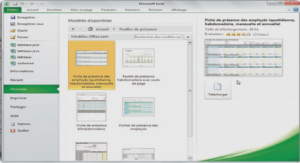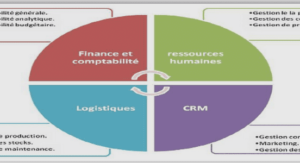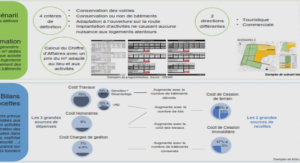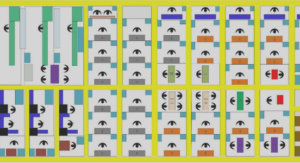Sommaire: Introduction to the MS Access tutorial with exercise
1 Introduction to the MS Access Tutorial
1.1 Intended Audience
1.2 Pre-Requisite Knowledge
2 Brief overview of Relational Databases and Database Applications
3 A Business Example
4 Starting Microsoft Access
5 Creating and Viewing Tables
5.1 Creating a Table Using the Design View
5.2 Exercise: Creating a Table
5.3 Viewing and Adding Data to a Table
5.4 Exercise: Adding Data to a Table
5.5 Creating Relationships Between tables
6 Creating and Running Queries
6.1 Single Table Queries
6.2 Exercise: Single Table Queries
6.3 Multiple Table Queries
6.4 Exercise: Multiple Table Queries
7 Creating and Running a Data Entry Form
7.1 Creating a Single Table Form using the Wizard
7.2 Exercise: Creating a Single Table Form
7.3 Review of Creating and Running a Data Entry Form
8 Creating and Running a Report
8.1 Creating a Single Table Report using the Wizard
8.2 Exercise: Creating a Single Table Report
8.3 Review of Creating and Running a Report
Extrait du course introduction to the MS Access tutorial with exercise
1. Introduction to the MS Access Tutorial
Welcome to the MS Access tutorial. This tutorial is designed to get the user up and running with MS Access. The four basic modules of Access are demonstrated: Tables, Forms, Reports and Queries. A business example is discussed first which provides a background for developing a simple database.
It is assumed that users of this tutorial are proficient in working with Microsoft Windows ’95, Windows ’98, Windows NT, Windows 2000 or Windows XP and with MS Excel.
This includes the use of the keyboard and mouse. The tutorial is based on Microsoft Access which is part of the Microsoft Office Professional suite that also includes MS Excel, MS Word and MS PowerPoint.
1.1 Intended Audience
This tutorial is intended for students just getting started with the MS Access database management system.
1.2 Pre-Requisite Knowledge
This tutorial assumes the student is familiar with the basic operation of a personal computer and Microsoft Windows ’95, Windows ’98, Windows NT, Windows 2000 or Windows XP. Specific skills required for this tutorial are:
– Use of the mouse and keyboard
– Formatting and working with floppy disks
– Opening and saving files on the hard disk and on floppy disks
– Managing files in general including the difference between floppy disks, drive letters, hard disk, etc.
– Running programs from the Windows Start menu
– Minimizing, maximizing and resizing windows
2 Brief overview of Relational Databases and Database Applications
The first databases implemented during the 1960s and 1970s were based upon either flat data files or the hierarchical or networked data models. These methods of storing data were relatively inflexible due to their rigid structure and heavy reliance on applications programs to perform even the most routine processing.
In the late 1970s, the relational database model which originated in the academic research community became available in commercial implementations such as IBM DB2 and Oracle. The relational data model specifies data stored in relations that have some relationships among them (hence the name relational).
3 A Business Example
In this section, we will outline a business example that will be used as a basis for the examples throughout the tutorial. In organizations, the job of analyzing the business and determining the appropriate database structure (tables and columns) is typically carried out by Systems Analysts. A Systems Analyst will gather information about how the business operates and will form a model of the data storage requirements. From this model, a database programmer will create the database tables and then work with the application developers to develop the rest of the database application.
4 Starting Microsoft Access
As with most Windows 95/98/NT/2000 programs, Access can be executed by navigating the Start menu in the lower left-hand corner of the Windows Desktop. A view of a Windows Desktop is given here: (Note that your Windows desktop may look slightly different).
To start Access, click on the Start button, then the Programs menu, then move to the MS Office menu and finally click on the Microsoft Access menu item. The MS Office Professional menu is shown below.
……….
Introduction to the MS Access tutorial with exercise (2392 KO) (Cours PDF)






